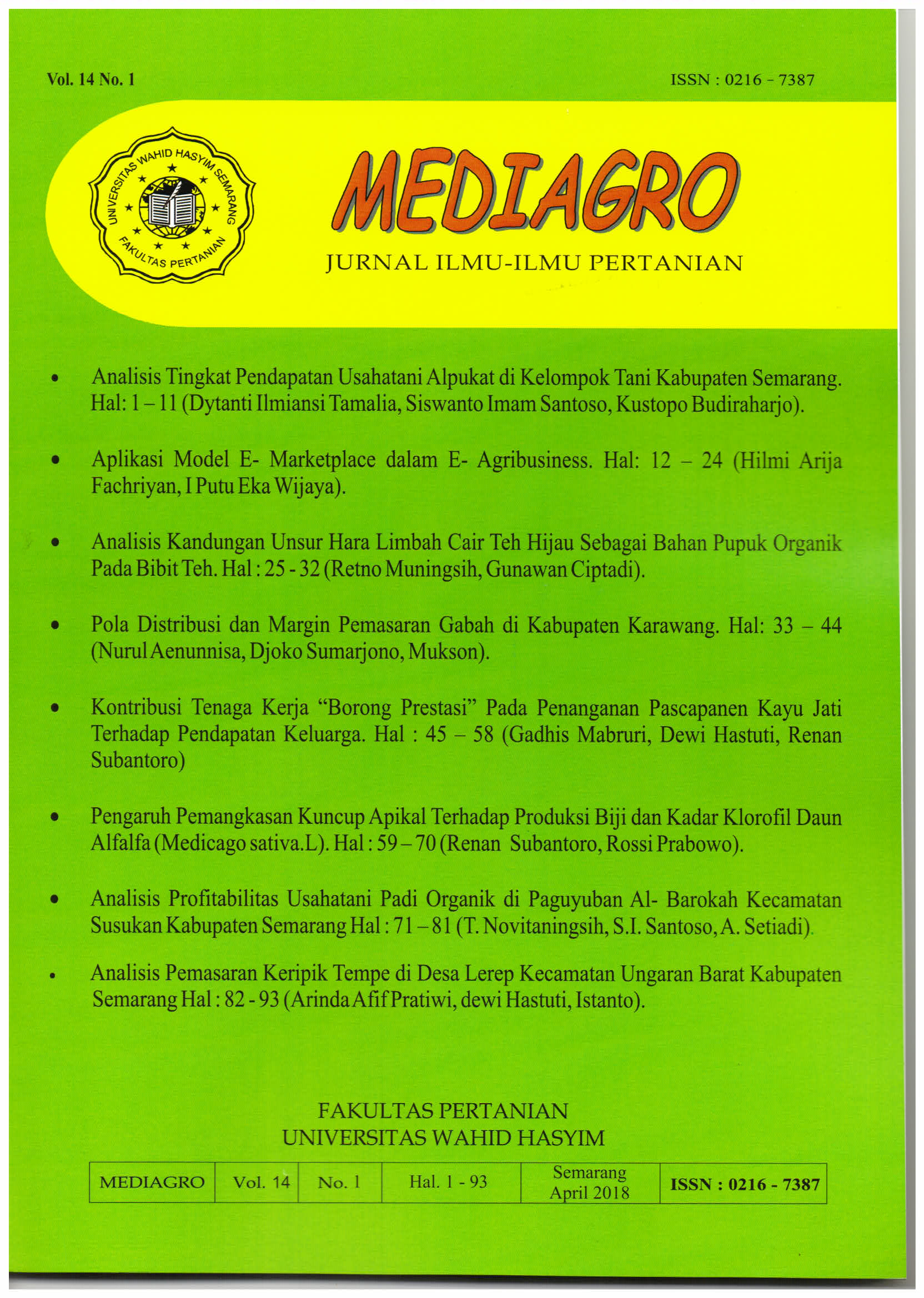Main Article Content
Abstract
Alfalfa plant in Indonesia its not easy to produce flowers and seeds. Flower production is also affected by cutting the apical bud. At this time there is no research on the effect of cutting the length of the apical bud of the flower and seed production of alfalfa, both in quantity and quality. Thus this study examines the apical bud cutting the length of the seed production and alfalfa leaf chlorophyll content. The purpose of this study was to determine the most optimal length of the apical bud cutting to produce optimal growth and production of alfalfa seed. Outcomes and benefits of this research are: a). Provide information for other researchers on seed production and alfalfa leaf chlorophyll content were treated with different apical bud cutting, which will carry out further research. b). Provide recommendations to stakeholders on the apical bud cutting the most optimal for alfalfa plants that produce highest seed production and alfalfa leaf chlorophyll content. c). Providing information for farmers and researchers on alfalfa seed development opportunities for the tropic zone. Research using randomized complete block design with four replications. This study was a single-center trial with a treatment of various lengths cutting apical bud. Apical bud cutting long treatment include without cutting, cutting apical bud length of 5 cm, 10 cm, 15 cm, 20 cm and 25 cm from the ground. When cutting is done when the plants aged 6 weeks after planting. The results of the study showed that the alfalfa plant leaf extract can be produced which is solid green chlorophyll that has the potential to be used as raw material for the manufacture of supplement health drinks. Alfalfa flower has emerged in the 4th month, this occurred in the treatment of cutting 5 cm. It shows the probability that the flower has the potential to develop into seeds.
Â
Keywords: alfalfa, cutting, chlorophyll, seeds, apical bud
